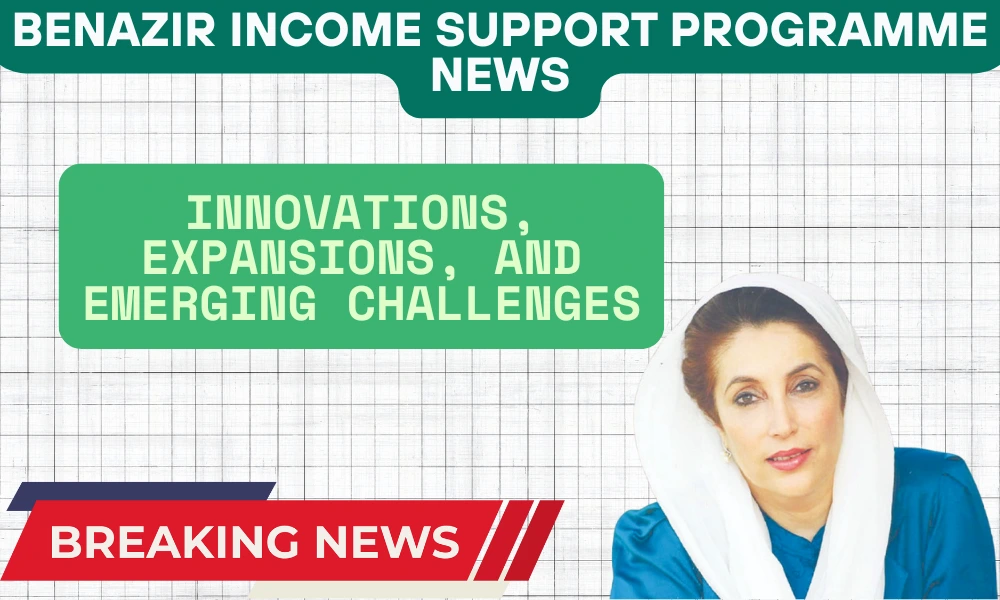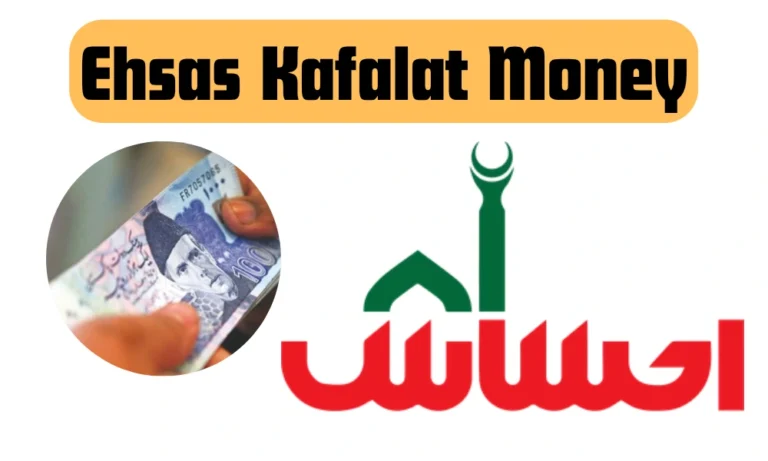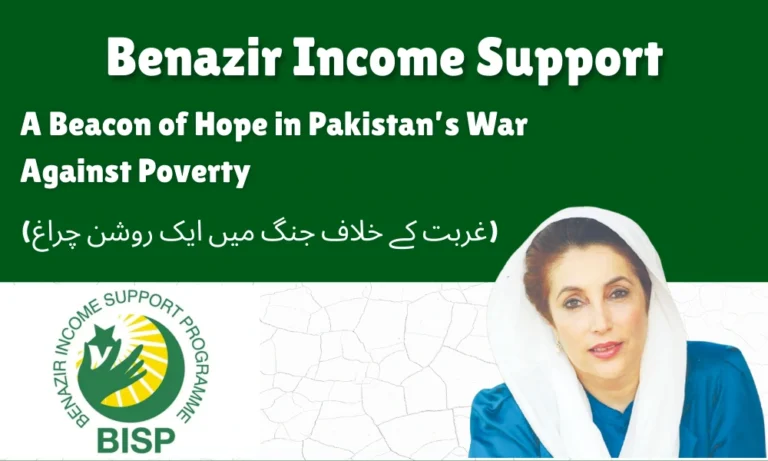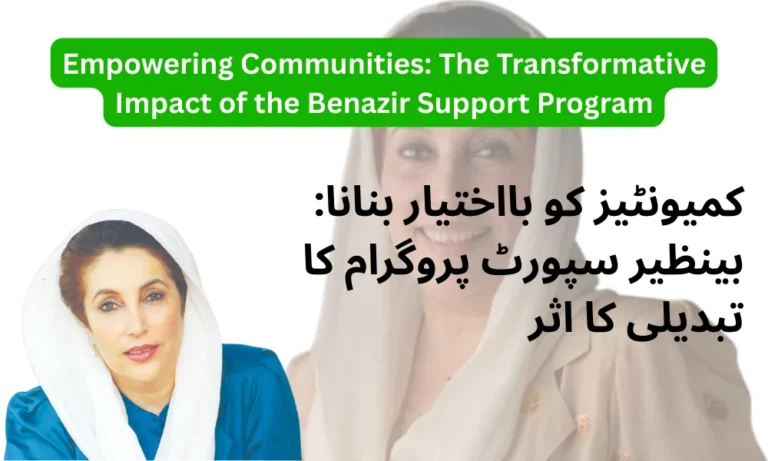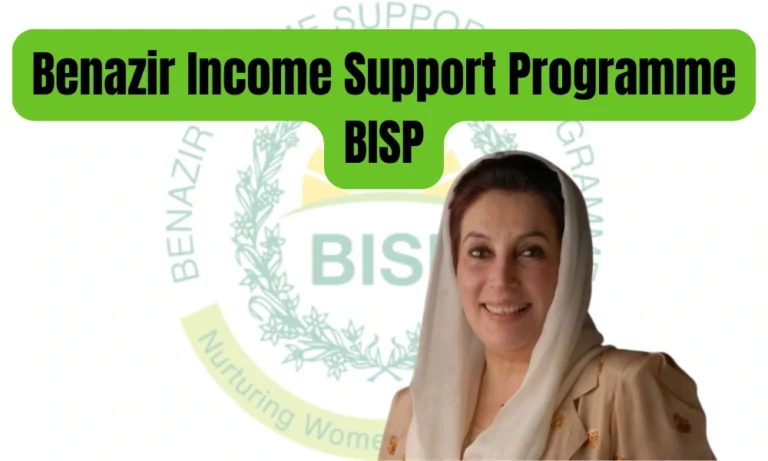As Pakistan moves into a complex socio-economic landscape marked by post-pandemic recovery, climate crises, and political changes, the Benazir Income Support Program (BISP) is evolving as the foundation of the country’s social safety net. By 2025, the program has undergone significant reforms, expanded its operations, and taken on new challenges, solidifying its role as a lifeline for millions of people. This article explores the latest developments for BISP in the mid-2020s, and the ways forward.
Expanded Coverage and Demographic Changes
By 2025, BISP has expanded its reach to 12.5 million households, up from over 9 million in 2023.
Urban Poor: With urbanization accelerating, BISP launched Urban Ehsaas, a sub-programme targeting low-income families in cities like Karachi, Lahore and Peshawar, where inflation and unemployment have soared.
Climate Refugees: In the wake of the 2024 Indus River floods, which displaced two million people, BISP added 50,000 climate-affected families from Sindh and Punjab to its beneficiary list.
Transgender Community: A landmark 2024 policy included transgender individuals as eligible beneficiaries, addressing systemic exclusion. More than 15,000 transgender Pakistanis are now receiving their money.
The stipend has now increased to PKR 12,000 per household in 2025, though critics say it still lags behind inflation, which is hovering at 25%.
Technological Leap: Blockchain and AI-Powered Governance
BISP’s digital transformation has accelerated:
Blockchain Payments: Partnering with Telenor Microfinance Bank, BISP piloted blockchain technology in 2024 to ensure fraud-free transactions. By 2025, 30% of payments are using the system, significantly reducing fraudulent claims.
AI-Powered Targeting: Advanced machine learning algorithms now analyze real-time data from NADRA, utility bills, and mobile usage to identify households. A 2025 World Bank report praised the system for reducing disbursement errors by half a percentage point.
BISP Mobile App: Launched in 2024, the app allows beneficiaries to track payments, file complaints, and access professional training modules. Over 5 million users have adopted it with regional language update plans
Policy Changes: From Cash Transfer to Holistic Empowerment
BISP has shifted to Education and Health Linked (CCTs):
Education Scholarship: Families receive a monthly bonus of PKR 1,000 per child if they maintain 70% school attendance, aiming to stem the crisis of Pakistan’s 23 million out-of-school children.
Health Incentives: Vaccination drives and compliance with prenatal care now receive additional payments. According to UNICEF, maternal mortality rates among BISP households declined somewhat in 2024-25.
Women’s Entrepreneurship: Partnering with the Ignite National Technology Fund, BISP provides digital skills training and microloans to millions of women annually, boosting small businesses in sectors such as e-commerce and agritech.
Climate Resilience: Bridging Well-Being and Sustainability
In response to Pakistan’s worsening climate emergency, BISP introduced Green Ehsaas in 2025:
Climate Grants: Farmers in flood-prone areas receive an additional PKR 3,000 quarterly for planting drought-resistant crops or adopting solar-powered irrigation.
Disaster Response Integration: BISP is now working with the National Disaster Management Authority (NDMA) to pre-register vulnerable communities, enabling rapid cash disbursements after a disaster.
UBI Pilot: Results and Scalability
The 2024 UBI pilot in Islamabad, providing PKR 15,000 per month to 10,000 families, had promising results:
Poverty Reduction: Households reported a 35 percent reduction in food insecurity.
Gender Equality: 68% of women used funds to start home-based businesses.
Scalability: In 2025, the program expanded to 50,000 rural households in Balochistan. ADB has pledged $200 million to support the adoption of UBI across the country by 2028.
Funding Innovations and International Cooperation
To address financial barriers, BISP has funded:
Elite Taxation: A “poverty alleviation surcharge” of a few percent on luxury imports (such as cars, electronics) has been significantly increased in BISP’s 2025 budget.
Corporate Partnerships: Companies like Engro support through CSR initiatives, providing funding to vocational centers in exchange for tax breaks.
Global Backing: The World Bank’s 1 billion∗ResilientPakistan∗ loan (2024) includes $300 million for BISP’s climate adaptation projects.
Political turmoil and public skepticism
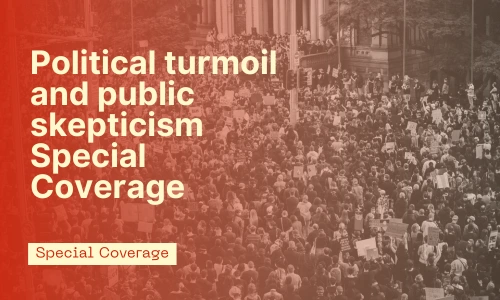
Despite progress, BISP faces hurdles:
Opposition criticism: PTI-led opposition
Demanded a third-party audit, alleging bias in the lists of beneficiaries.
Debate over the value of the stipend: While the stipend has increased to PKR 12,000, inflation has eroded its purchasing power. A 2025 PIDE survey Fou
Frequently Asked Questions (FAQs) about BISP in 2025
1. What is the current stipend amount under BISP in 2025?
As of 2025, the quarterly stipend for BISP beneficiaries has increased from PKR 9,000 in 2023 to PKR 12,000 per household. This still falls short of meeting the rising cost of living.
2. How does BISP identify eligible beneficiaries?
BISP uses AI-powered socio-economic targeting, analysis of NADRA data, utility bills, mobile usage and also conducts national surveys. Blockchain technology and biometric authentication provide further assurance and reduce fraud.
3. What new groups are included in BISP coverage in 2025?
The program now supports:
Urban poor through the Shehri Ehsaas initiative.
Climate refugees displaced by floods or drought.
Transgender individuals, with 15,000+ registered by mid-2025.
4. How is BISP tackling climate change?
Through Green Ehsaas, farmers receive an additional PKR 3,000 quarterly for adopting climate practices. BISP also collaborates with NDMA to pre-register communities affected by natural disasters for faster distribution of aid.
5. What are the educational incentives associated with BISP?
PKR 1,000 per month per child is provided to maintain 70% school attendance. Additionally, the BISP-Ehsaas scholarship funds university education for thousands of students from beneficiary households annually.
Conclusion
The Benazir Income Support Program in 2025 is a testament to Pakistan’s commitment to inclusive growth. Evolving from a cash transfer scheme to a multidimensional social protection framework, BISP is now alleviating poverty through financial assistance, education, climate adaptation, mental health support, and technological innovation. Its partnerships with universities, NGOs, and global institutions highlight a collaborative approach to systemic change.
While inflation and political uncertainty persist, BISP’s adaptive strategies—such as blockchain payments, AI-powered targeting, and UBI experiments—highlight its agility in a rapidly changing world. By empowering women, developing marginalized communities, and strengthening the climate, the program not only alleviates immediate suffering but is also sowing the seeds for long-term socio-economic transformation.
As Pakistan moves towards Vision 2028, BISP’s legacy lies in its ability to balance compassion with accountability, proving that social welfare can be both a safety net and a springboard for dignity and progress. For millions, it remains more than a program – it is a promise of hope.

